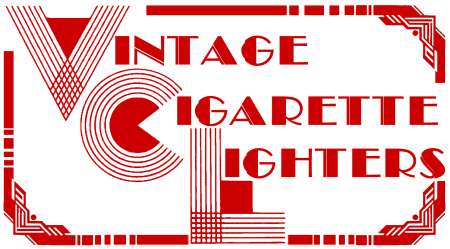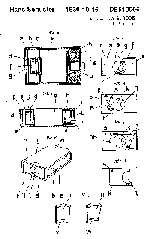 |
| Click To Enlarge |
Camera lighters have their history beginning in the shadowy world of espionage. The beginning seems to have been with a patent granted in Germany to Hans Schuster of Rumania for a matchbox camera - matchboxes being the most common lighters of the day. While it was patented, there seems to be no proof that it was ever produced. However, there was a miniature matchbox lighter in use by the German secret police prior to World War 2 which may have been based on this patent.
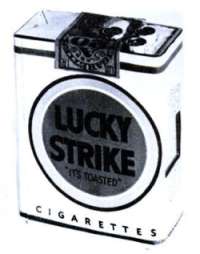 The most renowned of the matchbox lighters was produced during World War 2 by Kodak for the OSS (Office of Strategic Services - U.S. military intelligence) and was known as the M.B. (government designation was "Camera X"). This camera was announced by Kodak in 1947. It used 16mm film with a 25mm f/5 lens and a shutter speed of 1/50 second. The most renowned of the matchbox lighters was produced during World War 2 by Kodak for the OSS (Office of Strategic Services - U.S. military intelligence) and was known as the M.B. (government designation was "Camera X"). This camera was announced by Kodak in 1947. It used 16mm film with a 25mm f/5 lens and a shutter speed of 1/50 second.
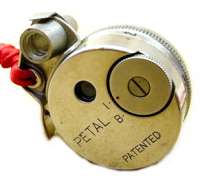 The CIG (Central Intelligence Group - immediate precursor to the CIA) or CIA had a matchbox camera developed and produced only one model. In 1949-50 Mast Development of Davenport, Iowa developed a camera to fit a standard American cigarette package (see Lucky Strike photo). Apparently 3 'dummy cigarettes' were used to operate controls and a set of 'Braille' buttons that could be felt through the package skin was used to set one of four exposure times. It seems only a few models of the prototype were ever produced. A light meter to go with the camera was produced and fitted into an Ohio Safety Match box. The CIG (Central Intelligence Group - immediate precursor to the CIA) or CIA had a matchbox camera developed and produced only one model. In 1949-50 Mast Development of Davenport, Iowa developed a camera to fit a standard American cigarette package (see Lucky Strike photo). Apparently 3 'dummy cigarettes' were used to operate controls and a set of 'Braille' buttons that could be felt through the package skin was used to set one of four exposure times. It seems only a few models of the prototype were ever produced. A light meter to go with the camera was produced and fitted into an Ohio Safety Match box.
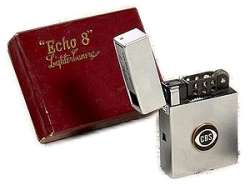 After World War 2 lighters were much more commonly used than matches, so, naturally, miniature cameras moved from matchboxes to lighters. Probably the first was a Zippo-type lighter with the mechanism of a Petal subminiature camera built into it. It was a fixed focus f/5.6 lens with a 1/50 second exposure or the ability to do 'bulb' exposures (where the shutter can be held open for any desired time period). The Petal camera was being produced in Occupied Japan in about 1948. After World War 2 lighters were much more commonly used than matches, so, naturally, miniature cameras moved from matchboxes to lighters. Probably the first was a Zippo-type lighter with the mechanism of a Petal subminiature camera built into it. It was a fixed focus f/5.6 lens with a 1/50 second exposure or the ability to do 'bulb' exposures (where the shutter can be held open for any desired time period). The Petal camera was being produced in Occupied Japan in about 1948.
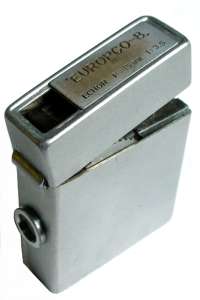 The best known of the camera lighters was produced in the 1950s by Suzuki Optical. These were the Echo 8 (sold in Europe as the Europco-8), Camera-Lite and Camera Lighter (Camera-Lite Model B). The best known of the camera lighters was produced in the 1950s by Suzuki Optical. These were the Echo 8 (sold in Europe as the Europco-8), Camera-Lite and Camera Lighter (Camera-Lite Model B).
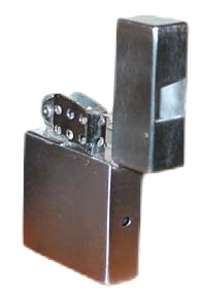 The Echo 8, introduced in 1951, sold for $19.95 (a lot of money at that time!) and was a Zippo-style lighter. It had a 15mm f/3.5 lens with variable f-stops and shutter speeds of 1/50 second and 'bulb'. The 1950s movie Roman Holiday had Eddie Albert sneaking pictures of Audrey Hepburn using this camera. The Echo 8, introduced in 1951, sold for $19.95 (a lot of money at that time!) and was a Zippo-style lighter. It had a 15mm f/3.5 lens with variable f-stops and shutter speeds of 1/50 second and 'bulb'. The 1950s movie Roman Holiday had Eddie Albert sneaking pictures of Audrey Hepburn using this camera.
The Camera-Lite came along in 1954 and looked much like the Echo 8. It was simpler, though and had an f/8 lens and no 'bulb' setting. It sold for $9.95. Villain jack Cassidy in a 1977 episode of McCloud used this camera. The Camera Lite Model B showed up in 1956 and had an etched case and a 'bulb' setting.
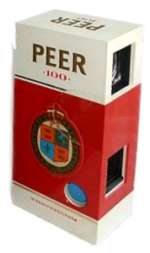 In the late 1950s Walter Kunik-Vertrieb, West Germany made camera lighters using a Petie (24mm f/11 lens) or Tuxi (25mm f/7.7 lens) camera mounted in the base of a Simson lighter. These used 17mm paper-backed film and the cameras could be removed from the lighter base. In the late 1950s Walter Kunik-Vertrieb, West Germany made camera lighters using a Petie (24mm f/11 lens) or Tuxi (25mm f/7.7 lens) camera mounted in the base of a Simson lighter. These used 17mm paper-backed film and the cameras could be removed from the lighter base.
The Peer 100 was a Kodak camera in a replica pack of Peer 100 cigarettes. Negative size was 11mm x 17mm. This was produced around 1976 and apparently was obtained by entering a contest the cigarette manufacturer ran.
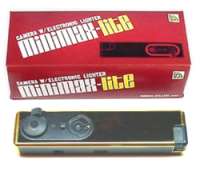 The Mini-Max Lite was a butane lighter with a 13.5mm f/8 lens with 1/60 second exposure. This was introduced in 1981 and produced by Nikoh Industrial and sold under the name of Supra Photolite in Europe. The Mini-Max Lite was a butane lighter with a 13.5mm f/8 lens with 1/60 second exposure. This was introduced in 1981 and produced by Nikoh Industrial and sold under the name of Supra Photolite in Europe.
|
